An expansion of a blog originally posted on Melisa Snarks blog on 11-04-2013.
THE SETTING OF THE ALL FOR A BLAST OF HOT AIR
In the simplest terms, the setting of a novel is the time and place in which the action of the narrative takes place. Without place, the characters are just there without reason to act or care. Setting is not only the time, location, and circumstance of where the story takes place, but the social milieu which shapes values and the characters. Not only the mood and texture of the place, but also attitudes, values, and issues of that point in time.
Interesting settings can be a challenge. At best, they can become a character in the story. Since my brand is "Travel to exotic foreign lands for romance and intrigue", my goal is to make my readers feel as though they've been to the place they've read about.
Author Susan Meissner writes:
"We are wired to assign value to places. That's why home is so sweet, Yosomite is so beautiful, Paris so romantic, and a moonlit beach is so calming. It's also why dark houses scare us, crumbling cliffs intimidate us, and foggy moors depress us. Place communicate something to us. A spider doesn't care it if makes a web in a dark, musty cellar or under a chair in an opulent ballroom. But we care!"
You can set a novel in a place you've never been and pull it off, but having been there is better. Physical presence gives you a sense of how the location feels, tastes, and smells. You hear the background sounds, feel the rhythm and pace. These things are often hard to research. Even if you've never been to the location where your novel is set, thinks about those characteristics of place.
I use international travel for the settings in my novels. The uniqueness of each location is my inspiration. When I travel, I look for locations, attitudes, and customs that result in a story that couldn't happen anywhere else and be the same story.
AFRICA
The setting for my latest novel in the romantic suspense series "Tour Director Extraordinaire" is southern Africa. I traveled to South Africa, Botswana, Zimbabwe, and Zambia in 2008. The trip inspired the novel "All For A Blast Of Hot Air."
Everything in Africa moves at its own pace, which tends to be slower and more laid back than the urban parts of the US. When tourists get frustrated about this, the response is a shrug and the words, "This is Africa." The phrase is delivered as more of an explanation rather than an excuse, and they don't understand why we have our panties in a wad.
While I was there, someone we met spoke of having taken a hot air balloon safari. About all that I heard was how wonderful the experience had been—I'm not even sure where in Africa she'd been—but the comment struck a chord, and set the stage for the novel.
SETTING OF EACH SCENE
I was intrigued by Author MaryLu Tyndall's list of six ways the setting can help or hinder the protagonist in achieving his/her goals in general and in a scene. It's worth the time to read her article. http://www.rachellegardner.com/2012/06/using-setting-as-a-character-a-tip-for-novelists/
Here's a recap of her points.
● The setting as a friend / a comfortable, relaxing place where protagonist can reflect, or a safe place to hide from enemies.
● The setting as an antagonist / introduce conflict, trouble, thwarts protagonist's plans.
● The setting as a mentor / a place to learn or make discoveries, a place to prepare to take something on.
● The setting as a shadow for protagonist / a shadow reflects the deepest flaws of the character / a setting that opens the character's eyes to his/her own flaws.
● The setting as a model of what the protagonist wants to be / a setting that fosters qualities to which the protagonist aspires.
● The setting as an example / a setting that either assists or hinders the character in the particular scene.
WHAT DID WE DO IN AFRICA?
So, how does a trip to Africa translate into a unique setting?
We didn't take a hot air balloon safari, but we did go on ground safaris. There were so many amazing locations and activities in those four countries that just didn't fit into my book. I find that unless I have a rough outline already when I visit the setting, I may or may not pay attention to the details that will end up enriching the story. I've learned to be more astute about things that may end up having a place in a novel.
The following are only mentioned in passing in my novel, if at all, but the experience added to my sense of what it is like in Africa. Think about them and see if these minimal descriptions bring any ideas about settings to your mind. In what kind of book would any one of these setting be appropriate?
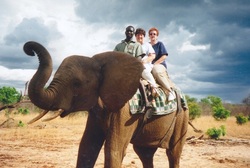
We walked with lions. Walking with the Lions is part of the "ALERT" program which is intended to reintroduce lions into parts of Africa where the population has been reduced due to farmers killing them to protect their farms and livestock. A century ago, the lion population in all of Africa numbered about 200,000. Now the population is between 20,000 and 30,000. Again, the money earned for these tourists walks (which are actually part of training the lions) helps to fund the program.
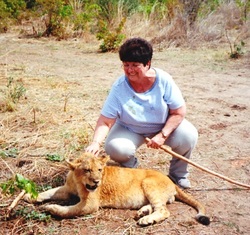
These falls are not the highest or widest in the world, but Mosi-oa-Tunya is the largest falling sheet of water in the world. The full width of the Zambezi River (5,604 feet – over one mile wide) plummets straight down for 354 feet in a single sheet.
Part of the uniqueness of the falls is that there aren't any mountains or deep valleys as you would expect. Just flat land with a wide river…and then you see a billowy column of what looks like white smoke. It's actually the spray from the river plummeting into a deep vertical chasm caused by water erosion over thousands of years in the fracture zones.

Baboons run free like squirrels. They're incredibly smart, can open most locks, and harass the tourists by breaking into cars and homes looking for food. To the lower right, a troupe is hanging out on the road to stop cars. In the second phone, the baboon on the right is taking the woman's purse. The one below is in a golf cart at a golf course. He's looking for food, but it looks like he's stealing the golf cart. They also steal the golf balls.
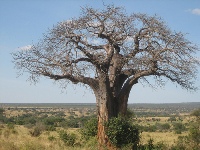
Every part of the tree can be used, which the primary reason it is called the tree of life. It's fruit, bark, roots, and wood provide innumerable products used by the native African peoples for thousands of years. Food, red dye, Vitamin C, medicine, rope and strings for musical instruments. Canoes are carved from the wood. The list goes on and on.
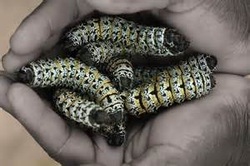
The Mopani worms, which are actually caterpillars, don't look like this when you eat them...well, not exactly. These are the staple protein for much of Africa.
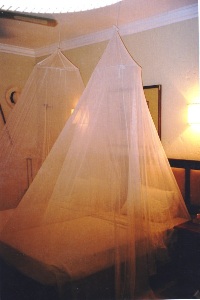
Watch for the rest of my blogs about Africa, including more about the worms and a recipe for them.
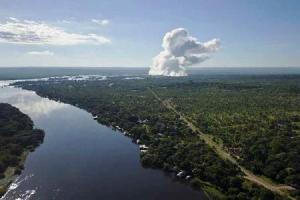
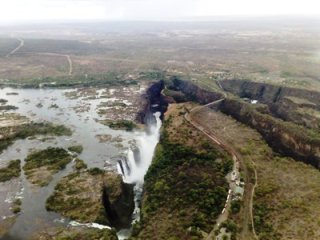
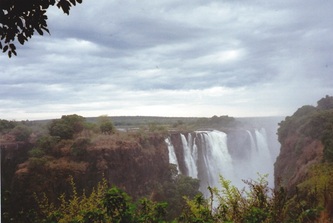
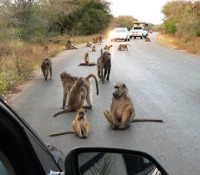
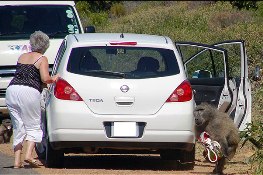
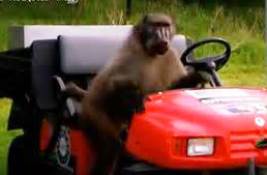
 RSS Feed
RSS Feed